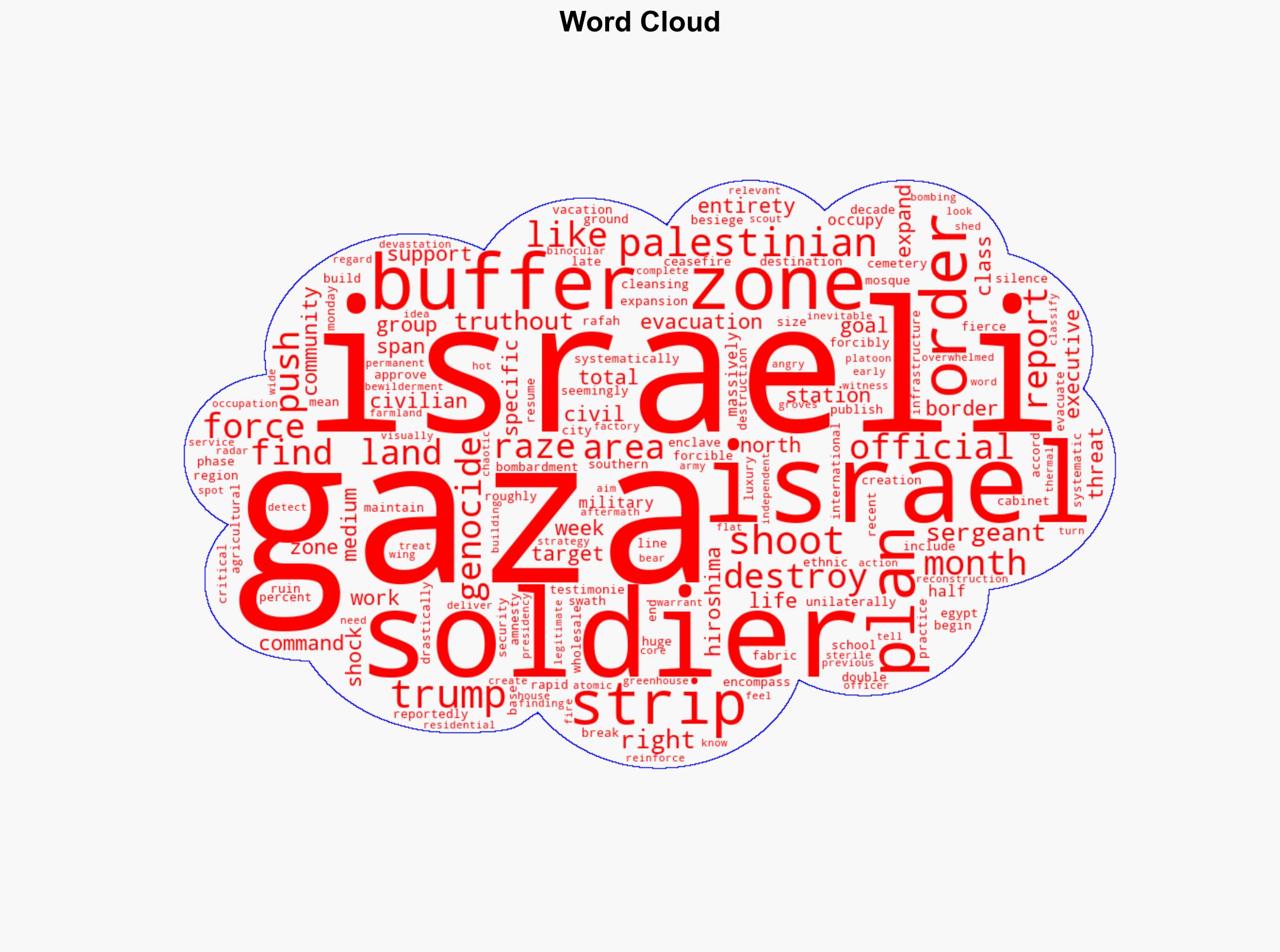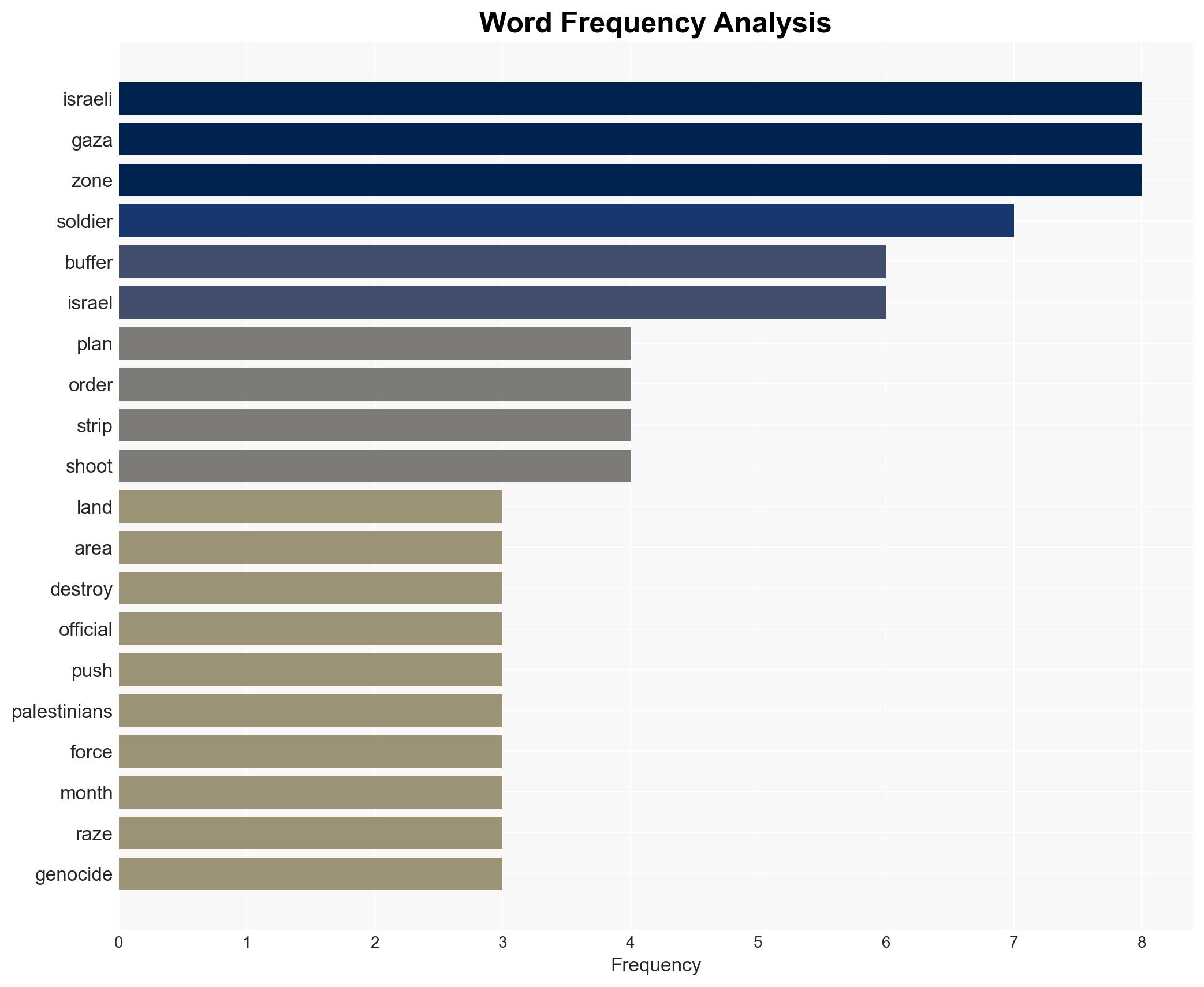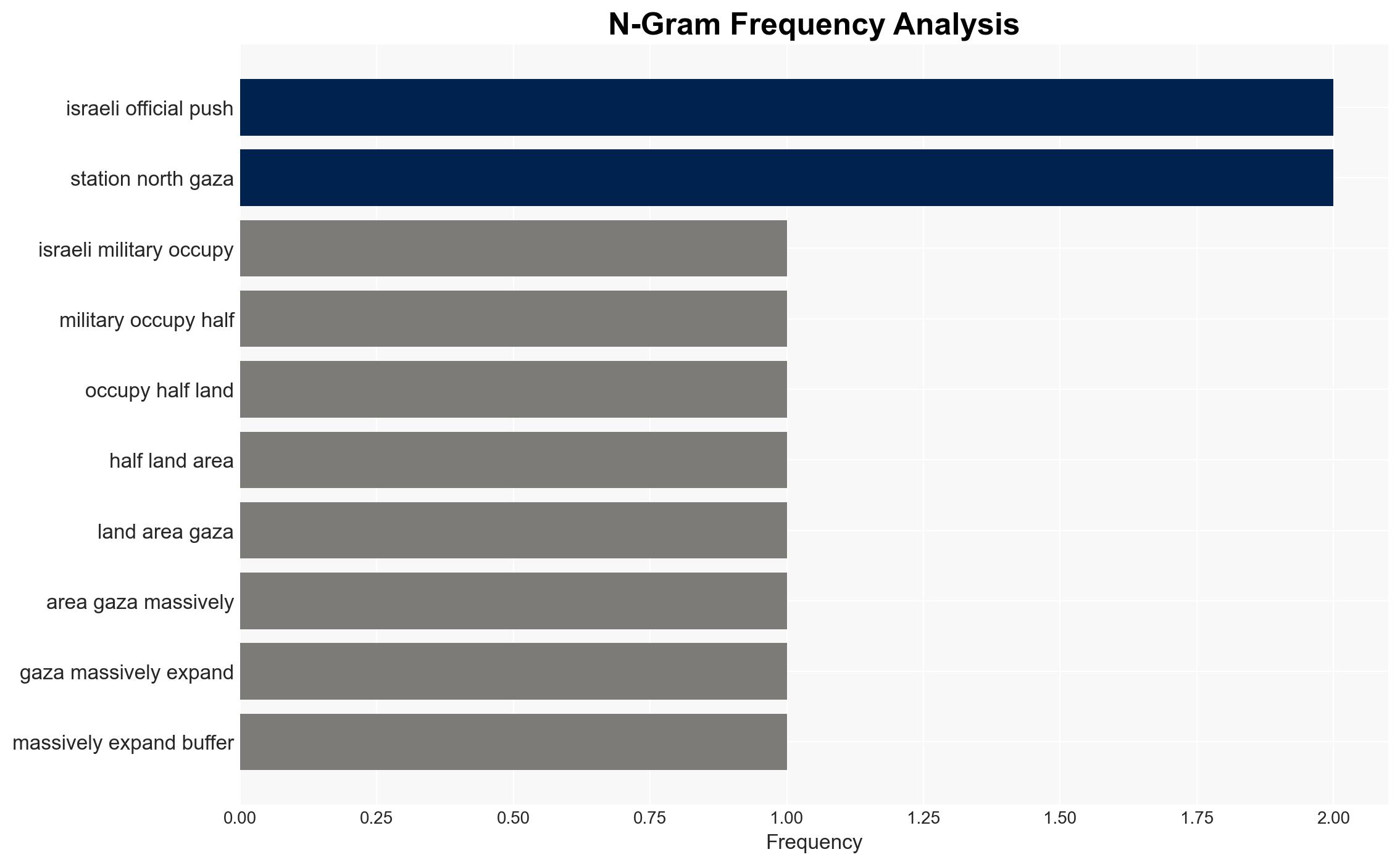Israel Now Occupying Over Half of Gaza After Expanding Bulldozed Buffer Zone – Truthout
Published on: 2025-04-08
Intelligence Report: Israel Now Occupying Over Half of Gaza After Expanding Bulldozed Buffer Zone – Truthout
1. BLUF (Bottom Line Up Front)
Israel has expanded its buffer zone in Gaza, now occupying over half of the territory. This expansion involves the systematic destruction of infrastructure and the forcible evacuation of Palestinians. The strategic objective appears to be the creation of a “sterile” zone, with implications for regional stability and humanitarian conditions. Immediate attention is required to address potential escalations and humanitarian crises.
2. Detailed Analysis
The following structured analytic techniques have been applied for this analysis:
General Analysis
The expansion of Israel’s buffer zone in Gaza is a significant development with profound implications. The operation involves the destruction of civilian infrastructure, including schools, mosques, and agricultural land. This action aligns with a broader strategic objective of creating a zone devoid of Palestinian presence, potentially as a precursor to further territorial claims or developments. The unilateral nature of the expansion, following the end of a ceasefire, suggests a calculated move to alter the status quo in the region.
3. Implications and Strategic Risks
The expansion poses several strategic risks:
- Regional Stability: The operation may exacerbate tensions with neighboring countries, particularly Egypt, and could lead to broader regional instability.
- Humanitarian Crisis: The forcible evacuation and destruction of infrastructure could lead to a severe humanitarian crisis, with displaced populations lacking access to essential services.
- National Security: The actions may provoke retaliatory measures from Palestinian groups, increasing the likelihood of armed conflict.
4. Recommendations and Outlook
Recommendations:
- Engage in diplomatic efforts to de-escalate tensions and encourage a return to ceasefire conditions.
- Coordinate with international organizations to provide humanitarian aid and support to displaced populations.
- Monitor developments closely to anticipate and mitigate potential security threats.
Outlook:
Best-case Scenario: Diplomatic interventions lead to a cessation of hostilities and a negotiated settlement that addresses humanitarian concerns.
Worst-case Scenario: Continued expansion and destruction lead to a full-scale humanitarian crisis and regional conflict.
Most Likely Outcome: Ongoing tensions with intermittent escalations, requiring sustained international attention and intervention.
5. Key Individuals and Entities
The report mentions significant individuals and organizations involved in the events. Notable mentions include:
- Amnesty International – Provided data on the extent of the buffer zone expansion.
- Israeli Security Cabinet – Approved plans for the evacuation and expansion.
- Soldier Testimonies – Highlighted the systematic nature of the destruction.
- Sandra Avalos – Mentioned in the context of broader political and social movements.





